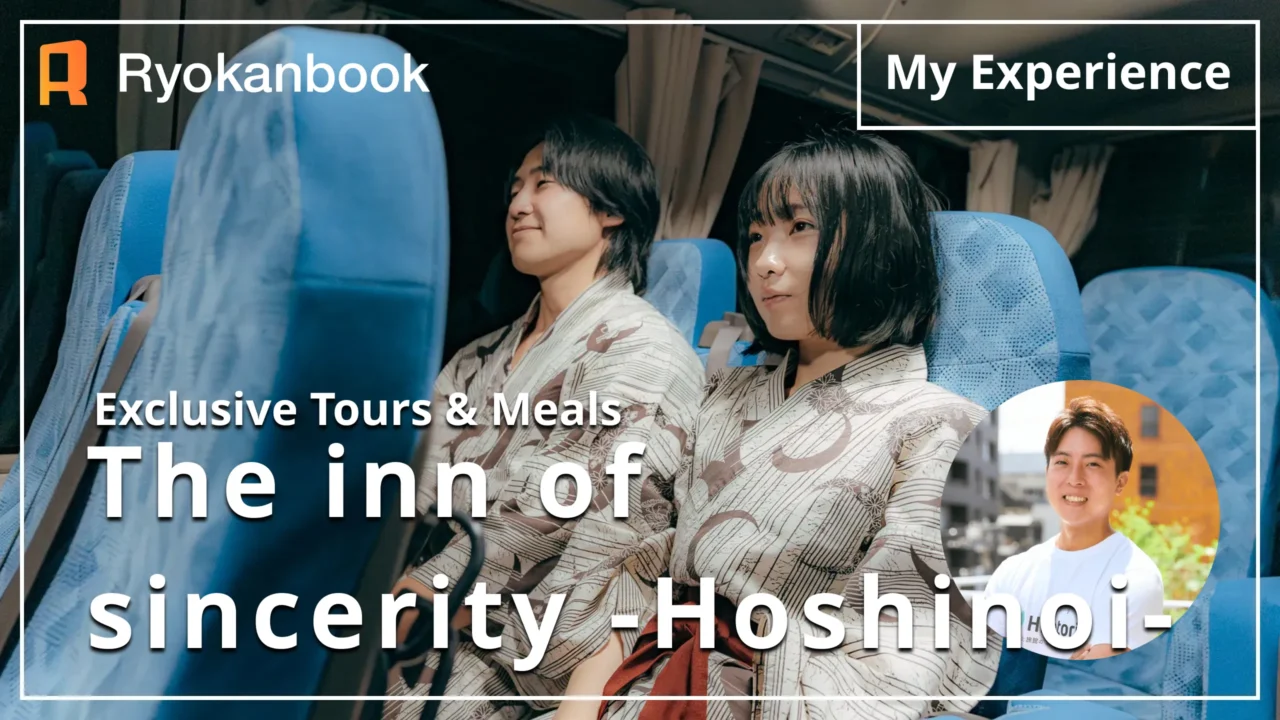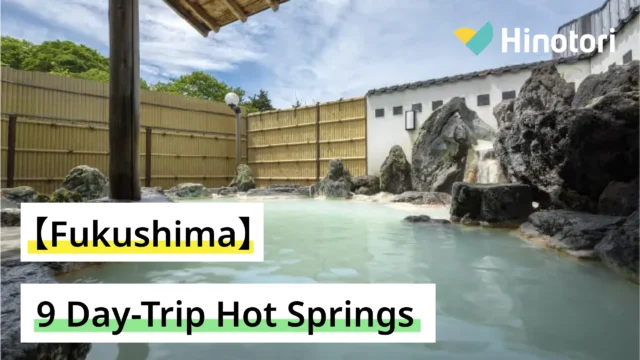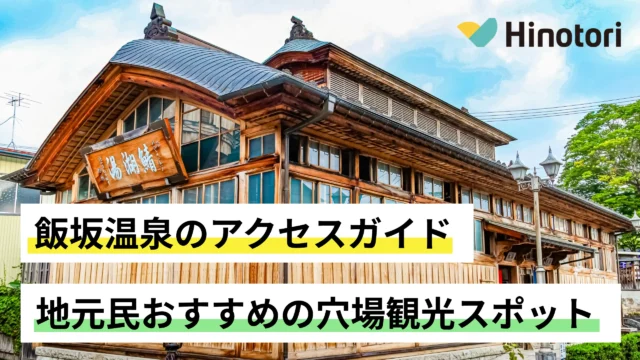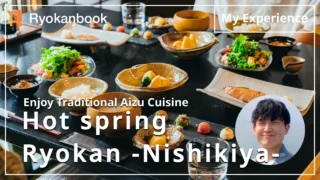I first discovered this ryokan over 10 years ago. By chance, I got to know the owners, and since then I’ve stayed here more than 50 times. It’s one of my all-time favorite places.
People often think it must be expensive, but it’s actually very affordable. What makes it special is the unique adventure tours and the warm, heartfelt hospitality you receive from the staff. There is truly no other place like Hoshinoi.
▷View more details about “Hoshinoi Ryokan”
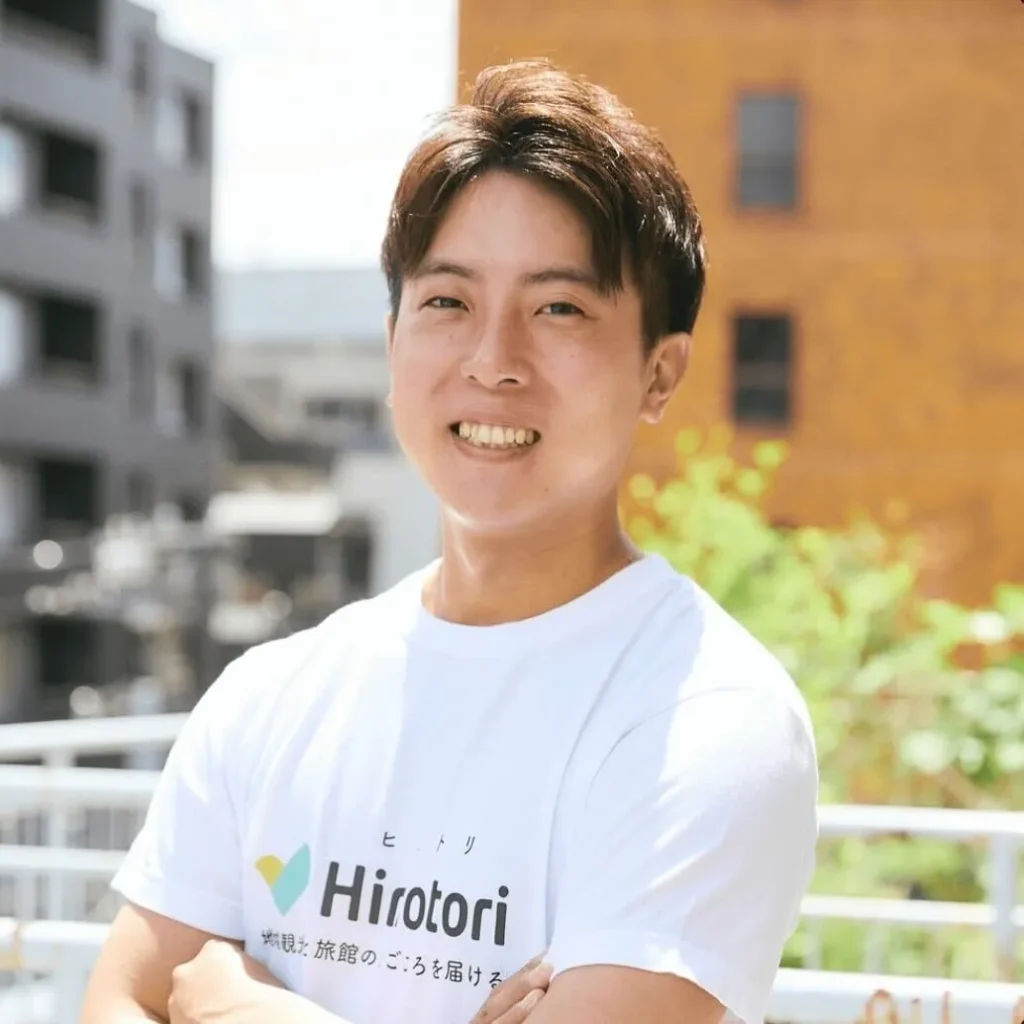
Hello! My name is Osaki, and I’m the editor-in-chief of Ryokanbook.
Every year, I stay at about 100 ryokans and interview around 70 of them.
Today, I want to introduce a very special ryokan — the one that first made me fall in love with this world of traditional inns. It is full of heartfelt hospitality (magokoro), and honestly, I almost don’t want to share it because it still feels like a hidden gem.
“A name shows its true nature.”
This is what comes to mind when I hear the name Magokoro no Yado — “The Inn of Sincere Hospitality.” In Japanese, magokoro means sincerity, warmth, and genuine care for others. No matter if a ryokan is luxurious or simple, this spirit is at the heart of Japanese hospitality. But Magokoro no Yado Hoshinoi goes far beyond that.
In this article, I’ll take you back to my first visit 12 years ago and share my honest memories and experiences from that stay.
Just so you know, in the story ahead:
- “Father” is the owner,
- “Mother” is the okami (the landlady),
- and “Grandmother” is the former okami.
I hope this makes it easier to follow along.
- How I First Discovered Hoshinoi
- A Snowy Outdoor Bath — Memories from Yunokami Onsen
- A Taste of Home — The Famous Potatoes
- Night Walk Through Ouchi-juku – A Star-Only Tour by Hoshinoi
- The Simple Joy of Falling Asleep on a Futon
- Freshly Made Breakfast — The Philosophy of the Grand Okami
- The Inn’s Heartfelt Hospitality—Seeing the Grandmother in Tears
How I First Discovered Hoshinoi
I first came across Magokoro no Yado Hoshinoi 12 years ago, in the winter when I was 19.
Three friends and I were on a bicycle trip from Tokyo to Fukushima—about 300 kilometers. We were broke university students, and by the time we reached Fukushima, I had only 3,000 yen left. It was snowing hard, and sleeping outside wasn’t an option. We were cold, exhausted, and honestly, I thought we might not make it through the night.
Out of sheer desperation, I searched “ryokan” on Google Maps.
The first result that came up was Magokoro no Yado Hoshinoi.
With nothing to lose, I called.
The okami (the hostess) simply said:
“Don’t worry about the money—just get here.”
It felt like a lifeline. We got back on our bikes and pedaled as fast as we could.
When we arrived, the okami and her daughter welcomed the three of us—soaked, shivering, completely worn out. I still remember her voice saying:
“You must have had a hard journey. You’re freezing—go take a bath first.”
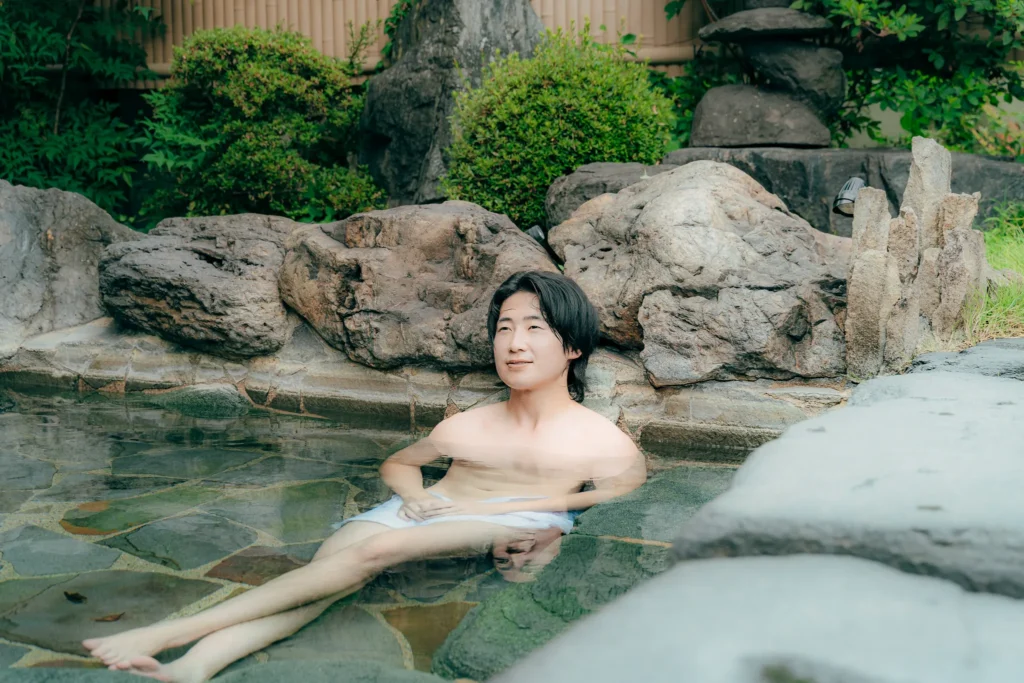
They were both smiling, warm, and so kind. At that moment, I became a fan for life.
Maybe it was the cold, the exhaustion, or just relief—but I remember sitting in that bath and crying.
A Snowy Outdoor Bath — Memories from Yunokami Onsen

The hot spring water in Yunokami Onsen is a mild alkaline simple spring. It’s so pure and gentle that you can even drink it. It’s known to help with muscle pain and chronic fatigue, and after cycling for three days straight, I could feel the warmth soaking deep into my tired legs.
Hoshinoi has both indoor and outdoor baths, but the one I’ll never forget is the outdoor bath in the falling snow. Sitting in the hot water, watching the mountains covered in fresh snow, we talked and relaxed—and before we knew it, an hour had passed.
Yunokami Onsen has such an abundant water supply that even regular homes receive hot spring water. People even use it for drinking and melting snow. Using hot spring water just to melt snow—it feels like the height of luxury.
I’ve soaked in this water dozens, maybe hundreds of times by now, and I still love it just as much. I keep coming back whenever I can. And now that I think about it—the owner’s daughter has such beautiful skin. Maybe that’s what happens when you grow up bathing in this hot spring water.
A Taste of Home — The Famous Potatoes
When we first arrived, I noticed a wrapped tour bus parked outside the entrance. On the side, it said “Foie Gras of the Fields” with a picture of their famous simmered potatoes.
Potatoes? As a specialty dish? I remember thinking it sounded unusual.
In Japan, you’ll rarely find a restaurant or ryokan where potatoes are treated as the star of the meal—except here at Hoshinoi. Their signature dish is tender simmered potatoes cooked together with daikon radish and koya-Tofu. They’re so soft they almost melt, gently sweet, and disappear from your mouth before you realize it.
After warming up in the bath and shaking off the exhaustion from cycling, the staff brought out dish after dish for us—despite knowing we didn’t have any money. They served us the simmered potatoes, their specialty Jūnen udon, grilled ayu (sweetfish), and more, without hesitation.
We said, “We really can’t pay for this…”
But the okami just smiled and said:
“It’s fine, it’s just leftovers. Young people hardly ever come here—so please, eat as much as you like.”
As we ate, she chatted with us like a caring mother:
“Why are you traveling by bicycle?”
“Wasn’t it hard to get all the way here?”
“Which university are you from?”
It really felt like being cared for at someone’s home—like tasting a Japanese mother’s cooking.
Recommended Dishes at Hoshinoi
Simmered Potatoes – The Signature Dish

Hoshinoi’s famous simmered potatoes surprise not only international travelers, but even Japanese guests. A whole potato is served, soft enough to fall apart with a light touch of chopsticks, and it melts in your mouth with a gentle sweetness. On the same plate, you’ll find koya-tofu (freeze-dried tofu) and daikon radish, both infused with the same comforting flavor. It’s a dish you’ll want to come back to again and again.
Surprisingly, it’s seasoned with nothing more than salt. Their motto is simple: “Serve it while it’s hot,” so it always arrives piping warm.
The woman who created this dish—the grandmother of the inn—once said during a TV interview:
“Have you ever wanted to quit?”
“Never. Once people come, they always come back.”
Out of all the dishes they serve, this simmered potato is the only one she has continued to cook for over 50 years.
Junen Udon – A Bowl of Longevity and Local Flavor
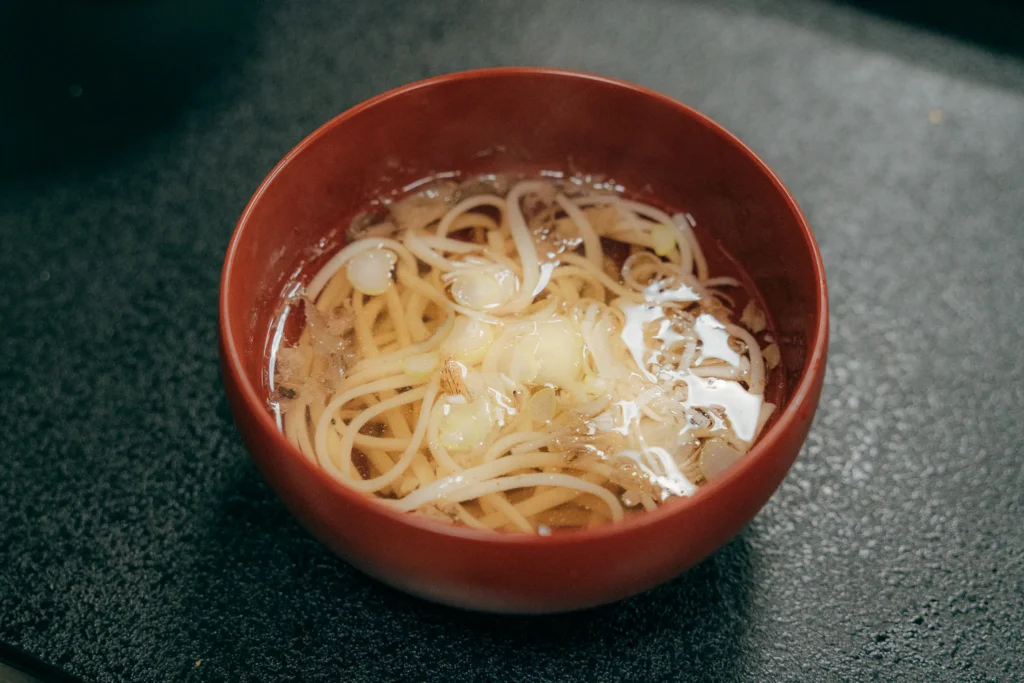
Junen Udon was created by the grandfather. Junen is the local word for perilla seeds (egoma), and in Fukushima, there’s a saying that eating it will make you live ten years longer. Wanting to use local ingredients and support the region, he experimented until this dish was born.
The broth is a vegetable-based dashi perfected by the okami and the grandmother, using a secret recipe passed down from an elderly woman in the countryside.
This dish has been loved for 35 years, and guests often say:
“I’ve never tasted a broth like this before—especially with these noodles.”
Salt-Grilled Ayu – Simple, Yet Unforgettable

Some people aren’t fond of river fish, but Hoshinoi’s salt-grilled ayu is on a different level. I’ve stayed at nearly 100 ryokan a year and tasted many versions of ayu, but I’ve yet to find one that beats Hoshinoi’s.
The skin is crispy, the inside tender and fluffy. They grill it twice in a large oven—a technique they insist on—to achieve the perfect texture.
You can eat it from head to tail, bones and all. If you visit, don’t miss this dish.
Night Walk Through Ouchi-juku – A Star-Only Tour by Hoshinoi
“Hey, you guys, hop on the bus!”
Following the owner’s casual command, we climbed onto the small shuttle bus. Around 8 p.m., just after dinner, the sudden night tour begins. The destination is one of the most famous sights in Fukushima—Ouchi-juku.
On the way, the owner of the inn, sitting in the driver’s seat with a microphone in hand, gives a funny and warm explanation about the history of Ouchi-juku and Yunokami Onsen.
Have you ever gone on a bus late at night to wander around a completely empty tourist spot?
It was a different kind of thrill from any journey I’ve done on my bicycle—a quiet excitement. Watching the owner drive confidently along the mountain roads while talking to us, I couldn’t help but think how cool and dependable he looked.
Normally, Ouchi-juku closes to visitors at 5 p.m. That means only the locals or guests staying at Hoshinoi get to see it at night.
During the day, Ouchi-juku is packed with tourists, but on this night tour, it feels like the whole village is reserved just for us—well, not just “feels like.” It actually is.
“The Beauty of Complete Darkness”

Can you imagine what a completely dark night view looks like?
The owner calls it the “pitch-black nightscape.” It’s not the glittering lights of a factory at night, nor the sparkling cities seen from mountaintops. It’s quieter—an untouched, natural kind of night that somehow puts your heart at ease.
Traditional thatched-roof houses line the village, and you feel as if you’ve stepped back into the Edo period, a time when samurai still walked these streets. There are no streetlights. Just small lanterns hanging from shopfronts, softly glowing with the names of the stores—tiny lights like candles flickering in a dark room.
This unpolished, natural night view has a way of stirring something deep inside you.
At Hoshinoi, a beloved inn where 70% of guests are repeat visitors, almost every single guest says the same thing: “We want to join the night tour.”
And it’s easy to understand why—no matter how many times you go, the view never gets old, and the owner’s storytelling keeps your heart tied to the moment.
Driven by a Pure Wish to Share the Region — A Variety of Tours, All from the Heart
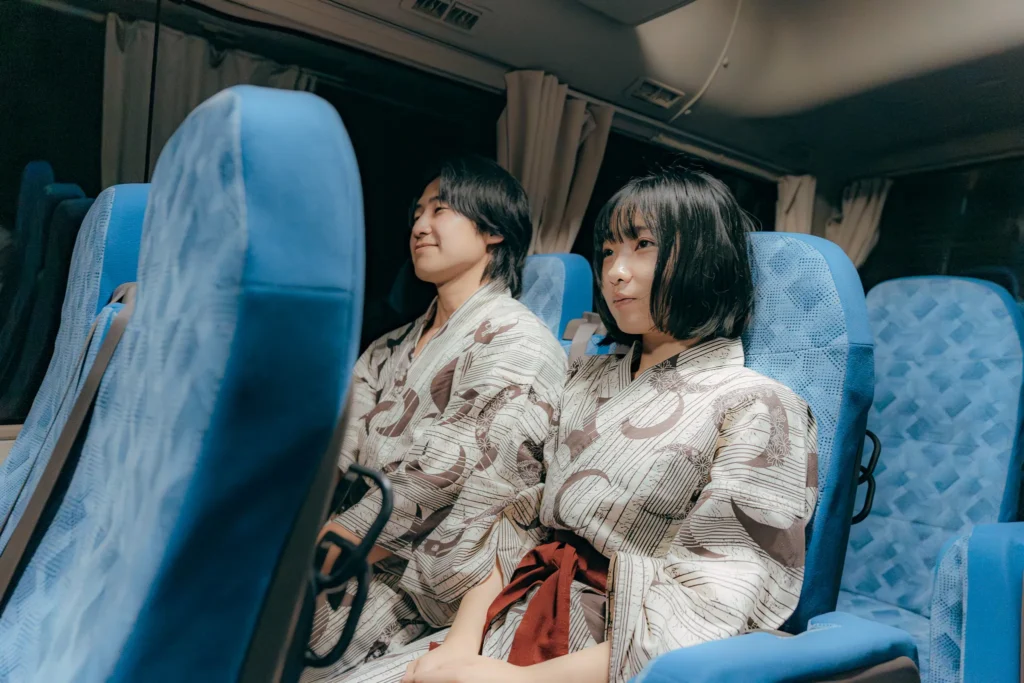
Ever since I started visiting Hoshinoi, I’ve joined not only the famous Ouchi-juku night tour, but also cherry blossom night tours at Tsuruga Castle, firefly-watching tours, and stargazing tours held on top of a dam. In the mornings, there are completely different experiences—like feeling the icy breeze from the Nakayama wind cave or walking through fields of blooming buckwheat flowers. These tours change with the seasons, offering something new every time you come.
And unbelievably, every single one of them is free.
What’s even more incredible is that the owner runs these tours every day without fail—even if there’s only one guest. He’s been doing this for 20 years straight. At this point, the tours aren’t just part of the inn—they’re part of his life.
One day I asked him,
“Why do you go this far?”
He smiled and said,
“I just want my guests to enjoy themselves. If someone tells me they had a great time, that alone makes it worth it.”
That, to me, is the very definition of magokoro—genuine, heartfelt hospitality with no pretense. For over two decades, his love for this land—Yunokami Onsen and Aizu—and his wish for others to feel its beauty have been the engine driving his bus, his body, and the hearts of everyone who joins his tours.
The Simple Joy of Falling Asleep on a Futon
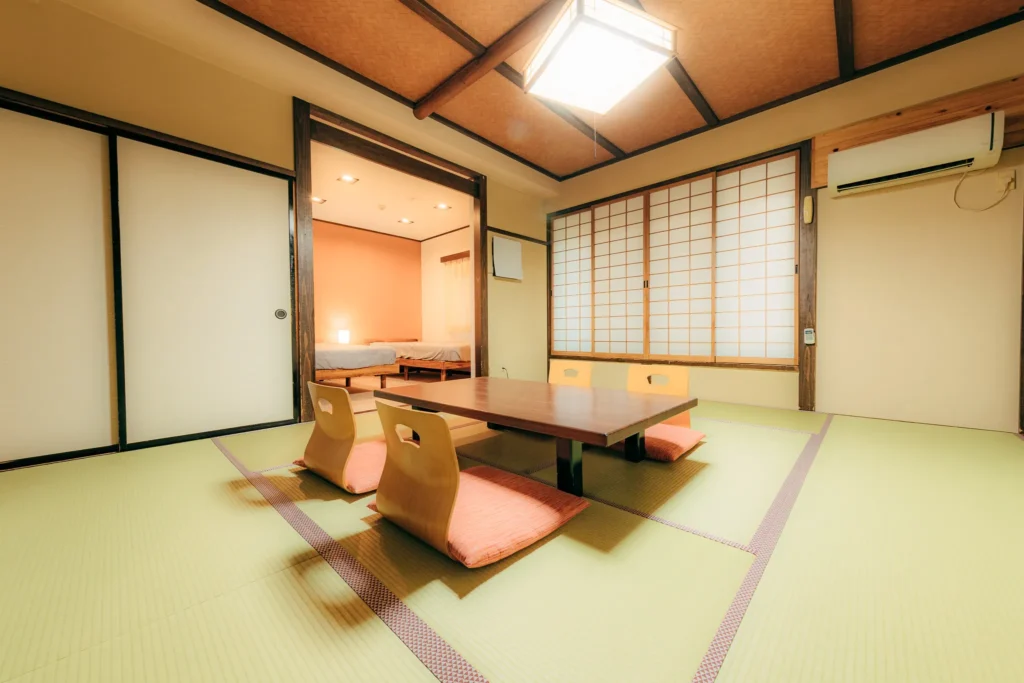
After dinner, the first thing that surprised me when I returned to my room was that the futon had already been laid out.
In many Japanese ryokan, the staff quietly prepare your bedding while you’re enjoying your evening meal. It might be a uniquely Japanese custom, but seeing the futon already spread out on the tatami floor always makes me feel at ease. Before I know it, I’m already curled up inside, just relaxing.
Sleeping on a futon in a tatami room—it’s a tradition that even many Japanese homes are slowly moving away from. Yet, whether you’re Japanese or from overseas, there’s something undeniably calming about wearing a yukata and lying down on a warm futon.
At Hoshinoi, they offer more than just traditional Japanese-style rooms. Depending on your needs, you can also choose rooms with private bathrooms, Japanese-Western hybrid rooms, or fully Western-style rooms.
That evening, when I thought I’d reached my limit from cycling, everything turned around—delicious food, a soothing hot spring bath, a night tour full of surprises, and finally, a room with a soft futon where I could rest in complete peace. It was more than comfort—it felt like luxury.
I still remember falling asleep while saying,
“We really owe this place something someday.”
Freshly Made Breakfast — The Philosophy of the Grand Okami
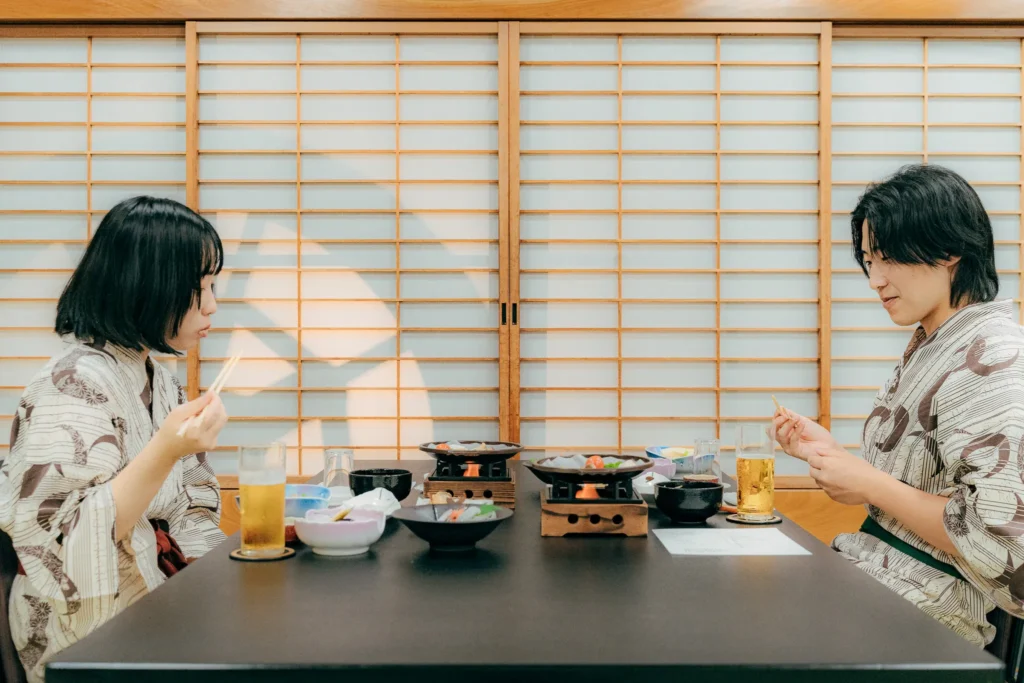
At Hoshinoi, their philosophy is simple: “Serve hot food hot.” Everything is brought out freshly prepared, and breakfast rice is even cooked just 30 minutes before the meal begins. This dedication has been passed down from the grand okami, to the current okami.
Guests can enjoy a hearty Japanese breakfast with freshly grilled salmon, seasonal mountain vegetables, and natto. Fluffy freshly cooked Aizu rice, local soba miso, and steaming miso soup gently wake the body and soul.
Back in my university days, I rarely ate breakfast. Even now, mornings are often rushed, and breakfast is easily skipped. But at Hoshinoi, I’m reminded just how wonderful this simple meal can be, and I savor the small happiness of a peaceful morning.
The thought behind it is clear:
“We want to serve our guests the hottest, freshest, and most delicious food possible.”
To me, this is another expression of magokoro—genuine, heartfelt hospitality that considers the happiness of each guest.
The Inn’s Heartfelt Hospitality—Seeing the Grandmother in Tears

Hoshinoi is approaching its 50th anniversary, and its story began with the grandmother, the grand okami. Apparently, about 40 years ago, a young man also came cycling to the inn—much like I did. When we said our goodbyes, I noticed the grandmother crying, perhaps reminded of that long-ago visitor.
Living in Tokyo, I’m not used to seeing such pure kindness—strangers in the countryside opening their hearts to people they’ve just met. I felt deeply moved. In reality, it should have been us shedding tears. Back then, we only had 3,000 yen, yet the grandmother and the owner cheerfully sent us off, saying:
“Just come back again someday.”
Twelve years have passed since that winter, and every year I return to Hoshinoi, bringing friends and family along.
Isn’t it the people we meet that make a trip unforgettable? Finding a ryokan with delicious food, an excellent hot spring, or spacious rooms is not so difficult in Japan. But encountering the warmth of local people—that is rare and extraordinary.
When you experience the genuine hospitality of others, a journey becomes memorable. A stay at Hoshinoi promises just that: an experience you will never forget.
Book your stay at “Hoshinoi Ryokan” here:https://ryokan-book.com/en/area/aizu/ryokan/hoshinoi/

